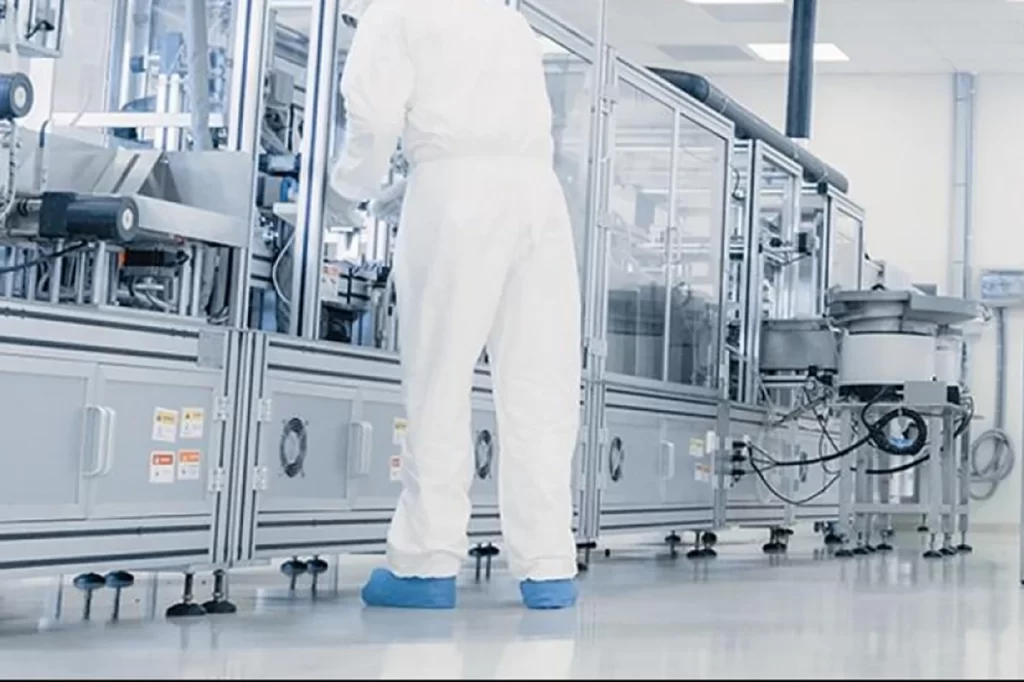What is a Class D cleanroom?


A cleanroom class D is a controlled particle level room designed for applications with a moderate level of contamination. These rooms are used for the production, testing, or storage of products or materials that require a moderate level of contamination.
A cleanroom class D has a particle level of 0.5 microns or more per cubic foot of air. This level of contamination is higher than that of cleanrooms of higher classes, such as class A or class B.
Cleanrooms class D typically have the following features:
Cleanrooms class D should be regularly inspected and maintained by a qualified engineer or technician to ensure that contamination control conditions are in compliance with requirements.
Some of the common applications of Class D cleanrooms include:
Class D cleanrooms are used to manufacture drugs and medical products that must be free of contamination. For example, Class D cleanrooms are used to manufacture vaccines, antibiotics, and other sensitive drugs.
Class D cleanrooms are used to test food and food products that must be free of contamination. For example, Class D cleanrooms are used to test dairy products, meat, and other sensitive food products.
Class D cleanrooms are used to manufacture electronic circuits that must be free of contamination. For example, Class D cleanrooms are used to manufacture computer chips, integrated circuits, and other sensitive electronic circuits.
Class D cleanrooms are used to test semiconductors that must be free of contamination. For example, Class D cleanrooms are used to test computer chips, integrated circuits, and other sensitive semiconductors.
In addition, Class D cleanrooms may be used for other applications such as cosmetic production, sanitary product testing, and medical equipment testing.
Here are some general points about the applications of Class D cleanrooms:
The design and construction of class D cleanrooms is a complex process that requires sufficient knowledge and experience. This process typically includes the following steps:
Design Phase: In this phase, the user’s needs and the cleanroom requirements are specified. Also, the technical specifications of the cleanroom, such as dimensions, layout, HVAC system, and other equipment, are determined. Construction Phase: In this phase, the cleanroom is built according to the designed technical specifications. This phase includes the construction of walls, ceiling, floor, doors, and other cleanroom equipment. Equipment Installation Phase: In this phase, cleanroom equipment, such as HVAC system, filters, and other equipment, are installed. Testing and Commissioning Phase: In this phase, the cleanroom is tested to ensure that the contamination control conditions are in compliance with the requirements.
In the design and construction of class D cleanrooms, various factors must be considered. Some of these factors include:
Based on these factors, the technical specifications of the cleanroom are determined and the cleanroom is built according to these specifications.
read more | Cleanroom Design
Class D cleanrooms have numerous benefits. Some of these benefits include:
read more | Air-cooled chillers
Conclusion
In summary, the design and construction of class D cleanrooms is a complex but essential process. This process should be carried out by a qualified engineer or technician to ensure that the cleanroom is designed in accordance with the requirements and performs properly.
Cleanrooms include a variety of equipment, and in order for a cleanroom to meet standards, it must use the appropriate equipment. Here are a few examples of cleanroom equipment: